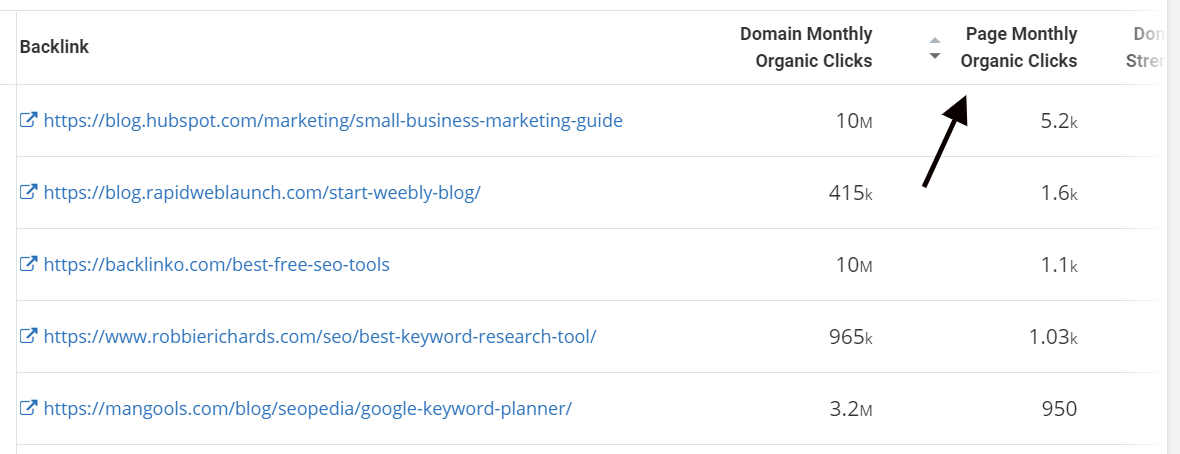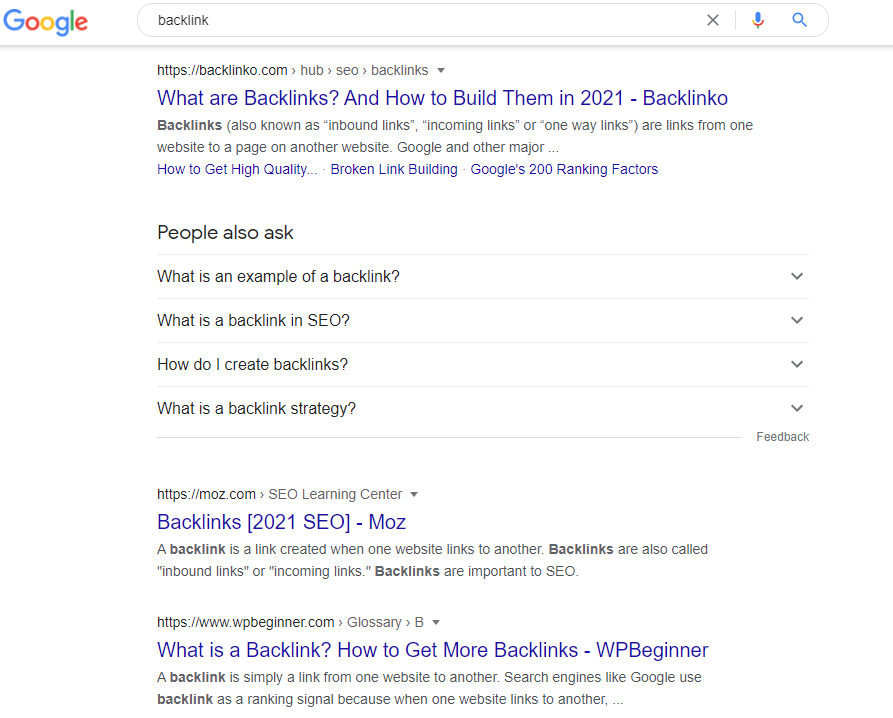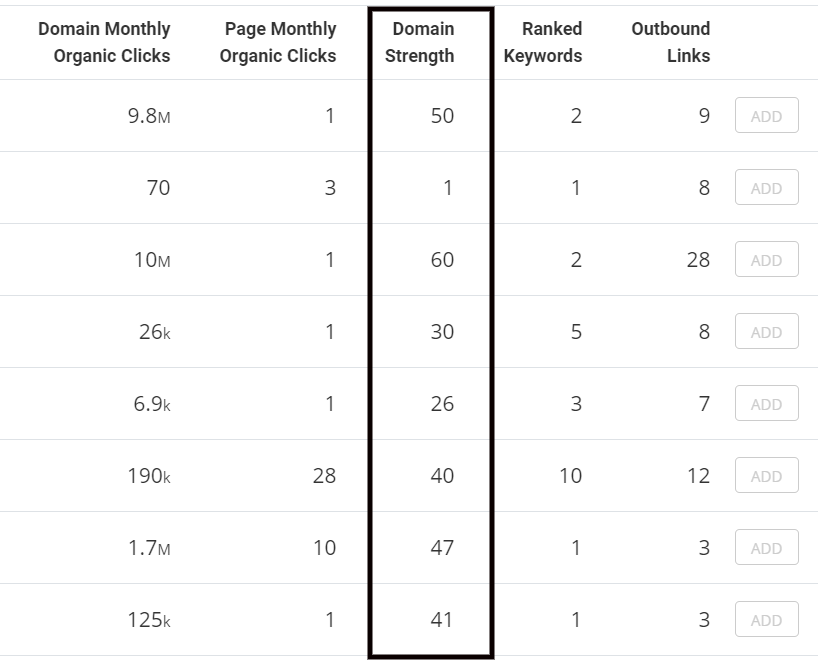The average price of a link bought on the web is $291.55. Why? Because links are a major ranking factor, and no one likes to do the work to build them. Never buy a backlink; you’ll be violating Google’s Webmaster Guidelines. But their price on the web shows how valuable they are and why you need to learn to get them in legitimate ways.
Competitor backlink analysis is a method of finding backlink opportunities by learning from your competitors. Instead of scouring the web for broken backlinks, you can analyze where your competitors got their backlinks, so you can target the places most likely to link back to you because they have already linked to websites that you directly compete with.
Building backlinks isn’t easy, but competitor backlink analysis is easier than most people think. You don't need to spend hours building a sophisticated model of your competitors' complete backlink profiles; instead, just use a tool to find your competitor's top links, pick the best ones, and then go after them until your backlink profile is strong enough to help you outrank your competition. You might not win every backlink that you target, but you'll quickly build a backlink profile without wasting your time or paying a cent.
How to Find Great Backlinks
There are two ways to analyze your competitors’ backlink profiles and find backlink opportunities:
- Finding a single competitor’s most valuable backlinks
- Analyzing the best backlink opportunities based on a keyword
In this first section, we’ll outline how you can easily find these opportunities so that you’ll have lots to work with later on when you determine which opportunities are the best ones to pursue first.
1. Primary Competitor Backlink Analysis
The most simple and direct way to find backlink opportunities is to use a backlink tool to see who is linking to your primary competitor. Although you can use your preferred backlink tool for the job, we’ll be demonstrating using SpyFu.
First, determine which competitor to analyze. Using SpyFu’s Top Organic Competitors Tool, you can find the websites your content is most often competing with for organic traffic. Type your own domain into the tool and then find the competitor with the greatest keyword overlap with you.

In this case, kwfinder.com, semrush.com, and ahrefs.com all have a lot of keyword overlap with us. This overlap means that most of their best backlinks will be relevant to us as well.
Next, take your top competitor, and put them into your backlink tool to see their backlink profile.

There are two main reasons why you should build backlinks: to show Google you’re a trustworthy source and to bring relevant traffic to your site. With these two goals in mind, you can use the toggles at the top of the chart to sort by Domain Strength (for SEO) or Page Monthly Organic Clicks (for relevant searchers) to find backlinks that can help you with these goals.

When sorting by domain strength, look for high-level domains that aren’t social media sites or hosts for content like medium.com. Although these sites have high domain strengths, since anyone can post on social media and link to their own site, they aren’t worth much as SEO trust signals.
Skim through the results and look for pages on domains that not just anyone can post on. If you aren’t sure, click on the link and take a look. When you find one with a good domain strength rating and exclusivity, add the page’s URL to your backlink opportunity list along with its domain strength, organic page views data, and the name of the competitor whose backlink you’re tracking.
For example, when looking at kwfinder.com, we could include this post from HubSpot on our list, like so.

Keep it simple and easy. Backlink building is often a numbers game, so the fewer metrics you track, the quicker you can get to actual outreach and link building.
When building backlinks to boost your domain strength, focus on links to websites with a higher domain strength than you. So if you have a domain strength rating of 50, then add any websites to your list with a domain strength that is 50 or higher.
When you’ve gone over all of the opportunities sorted by domain strength, switch over to results filtered by Page Monthly Organic Clicks.

With Page Monthly Organic Clicks, be more selective based on the number of clicks and relevancy. You want people to actually get to your site and find relevant content, so click on the link and examine how the link is being used and what the subject of the article is. If the article has nothing to do with your product/service/niche, leave it off your list. Further, if your competitor’s link is buried in a footnote at the bottom, then move on and look for a better opportunity.
To easily find your competitor’s backlink, right-click on the page, select “inspect,” hit Ctrl+F, and then search for your competitor’s domain. The find feature will take you wherever that domain is on the page by checking the page’s source code.

Unless the domain strength is high or the relevancy is very good, we recommend that you focus on pages that get at least 500 viewers a month. If the page is highly relevant, like a top 10 best X tools, and your tool isn't on it, then don't worry about the 500 number. Otherwise, 500 will help you keep from having your number of opportunities inflate beyond where it is practical to research them all. To make things easy, try to keep your total batch of backlink opportunities to less than 50; you can always go through this process again to look for more.
2. Keyword Competitor Backlink Analysis
Although starting from the point of view of your competitors is one way to find backlinks, another way is to start with a keyword and build from there. By sorting backlinks by keyword, you can build up backlinks to a specific subset of your pages or find opportunities on sites that aren’t in your top three or four competitors. Due to this, when searching by keyword, you should already know which page or pages you want to build backlinks to because it’ll help you gauge how relevant each of the backlink opportunities is to your target page.
Start with the SpyFu Backlinks Tool and input the keyword you want to build links around, for instance, “backlink.”

Next, look through the results and add the most relevant backlink opportunities that you find. For example, if we’re building backlinks to our page on removing bad backlinks, we could look through the backlink opportunities for pages that discuss the negative impact of bad backlinks on SEO. We could then prioritize those pages over other more general backlink-related articles.
Another trick to build up backlinks for a specific page is to analyze the pages that make up that keyword’s SERP. Type your keyword into Google or the SERP Analysis Tool, and copy the URLs for the top three results.

Next, return to the Backlinks Tool and input the URLs one at a time to see who is linking to them.

If you’ve written a piece of content that is directly competing for this keyword, then all of these backlink opportunities should be relevant and worth pursuing.
If your list is beginning to head north of 50, consider getting pickier by focusing on opportunities with higher domain strengths, organic traffic, and topical relevancy.
With a good list of backlink opportunities in hand, it’s time to determine which ones to start focusing on.
How to Pick Which Backlinks to Go After
Some backlinks are worth more than others. By understanding what the best backlinks all have in common, you can pick out the winners easily and prioritize them when you start to reach out to win these links.
When evaluating your list of link prospects, consider each candidate on this list of criteria:
- Domain strength: How strong is this domain?
- Relevancy: Are this website and page relevant to your website or the article you’re targeting the backlinks to?
- Diversity: Have you ever had a backlink from this page before?
- Link type: Are you getting a follow or no-follow link?
- Odds of success: What are the chances your work is going to pay off?
Many of these criteria are subjective or are hard to quantify; that’s okay. Consider this more of a set of guidelines you should go through to weed out any terrible backlinks or to prioritize the cream of the crop.
Go through each of your link opportunities found in the last section and consider these five criteria. Link building is still a game where you should expect far more rejections than wins, so don’t be too harsh on your opportunities. In most cases, you’d still rather have any one of these links than no links at all.
Domain Strength
Domain strength is a measure of how trustworthy a website is in the eyes of Google. Google measures this with something called PageRank. However, this information is no longer public. Instead, other sites have made their own approximations of PageRank. These can sometimes be referred to as domain authority or authority score, but each is trying to gauge how “strong” the SEO of a particular domain is.
When a backlink comes from a strong domain, that link is worth more toward helping you rank than a lower domain website. For example, if The New York Times links to your website with the anchor text “best candy in Maryland,” this is a strong signal to Google that this page and domain have to do with candy in Maryland, and so it may rank better for associated keywords. On the other hand, if a new WordPress blog makes the same claim, Google won’t consider that opinion as highly.
You can use any SEO tool to find some version of the domain strength metric. If you’re using SpyFu’s Backlinks Tool, then that information will be given beside each individual link.

Another important way to determine the strength of a website is to look at the quality of the site.
- Is it well made?
- Is the information correct and insightful?
- Is it frequently updated with new posts and pages?
A good website with quality information is going to give better backlinks. So if you’d rather not rely on a number kicked up by an algorithm, then use your own judgment and prioritize backlinks from websites that you trust.
If a website seems like it’s poor quality, or worse, deliberately acting as a link farm, immediately remove it from your list. In most cases, even an okay link is a win for your website, but bad links from spammy websites can actively hurt your SEO. You can learn more about these kinds of backlinks and how to remove them in our post on bad backlinks.
Relevancy
Relevancy is a metric that can get lost in the shuffle when all you focus on are the numbers. At the core of relevancy is the question: how much of an expert in your field is this website? The New York Times is hugely authoritative, but it might not carry the same relevancy as a local chamber of commerce website when it comes to your local tour company.
When evaluating your link opportunities, look at the domain and page of the link giver and consider whether they have the authority on your niche to give a solid recommendation that means something to readers and to Google. You shouldn’t turn down a great backlink from a website if the relevancy isn’t perfect; if you have the chance to go after a link from a clear authority in your field, then that's an opportunity you should put at the top of your priority list.
Diversity
Google wants you to have a diverse backlink profile. Repeat backlinks are fine, but if 90% of your backlinks all come from one site, then Google might start to get suspicious that you and that website have set up a link scheme that could get you penalized.
Consider this a less important criterion, but if you have the chance to prioritize a more diverse link, then you should do that.
Link Type
There are a number of link types to be aware of, but the most important are dofollow and nofollow links. A dofollow link is preferable to a nofollow link as a nofollow link is used to signal to search engines that you aren’t sending trust signals to the website you are linking to.
The easiest way to know if a link opportunity will result in a dofollow or nofollow is to ask or look at their other links. To see if they use dofollow or nofollow links, inspect a page and look for the rel=“nofollow” tag. There is no dofollow tag, so if there is no “nofollow” tag, it’s a dofollow link.

If all of the links are nofollows or dofolllows, then you should have a good idea of what you would be getting. If a page is handing out nofollow links, put their backlink opportunity at the bottom of your list.
Odds of Success
You should never not go after a great link just because your odds of getting it are low. That being said, you don’t want to waste all of your time on links with very low odds. Also, there are some circumstances where backlinks just aren’t going to happen.
When considering your odds of success, look for these factors:
- Website Affiliations: If you notice a lot of links going between two websites, they might be owned by the same company. There is little to no chance you’ll be able to replace one of their links with yours if that is the case.
- Huge Disparity in Domain Strength: If you’ve just gotten started on your blog, Disney probably isn’t going to link to your website, however nicely you ask.
- News Stories: Unless there is something factually wrong about a news story, the odds are slim that they’re going to make changes to their already existing articles. Spend your time going after another avenue.
Again, don’t think just because you’re a small website you can't swing for the fences, but be realistic. Focus on links with better odds, and if there are a couple of dream links that rank highly in all other respects, then take the time and try to win them.
With an understanding of what these five criteria mean, now all you have to do is go through your link opportunities and prioritize them. In most cases, you should be able to check out a page in a minute or two, judging it for its quality, relevancy, backlink types, and odds of success. Give it a number between 1-10, and then move on. You don't want to spend forever prospecting links when the real payoff and time should be spent actually winning them. With your links graded, your competitor backlink analysis is done, and you're ready to beef up your backlink profile. Repeat this process as needed to find new backlink opportunities to constantly build on your success and get more backlinks.
Learn How to Win Backlinks
Backlinks might be a numbers game, but you can tilt the field in your favor when you use the best tactics. Webmasters get a ton of backlink requests all of the time, so you want to make sure that you’re doing everything you can to stand out and increase your chances of getting a backlink placed. Use our top backlink-building strategies to make sure you have the best chances to win the backlinks your website needs to grow and conquer the competition.

